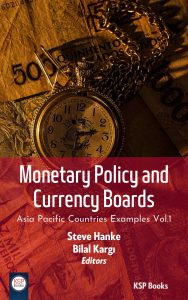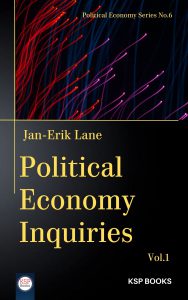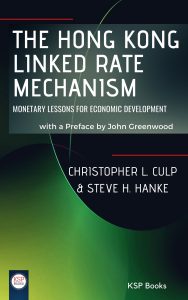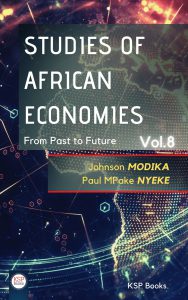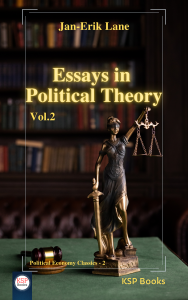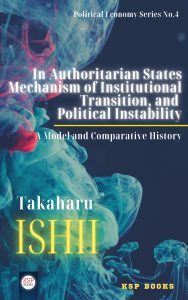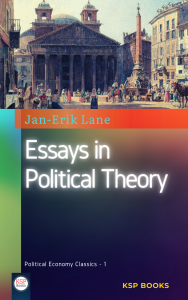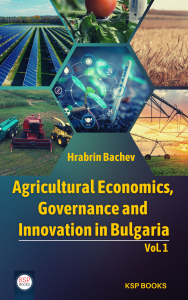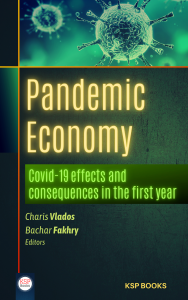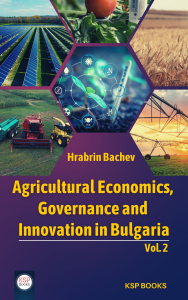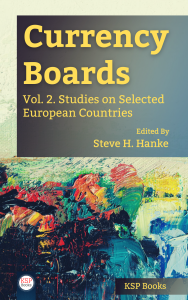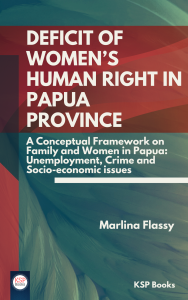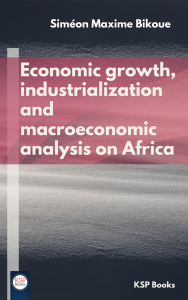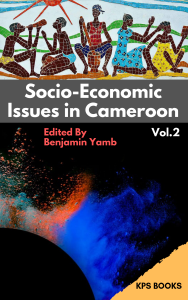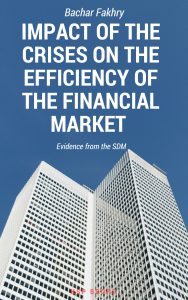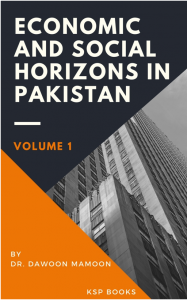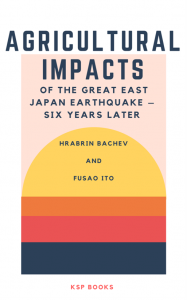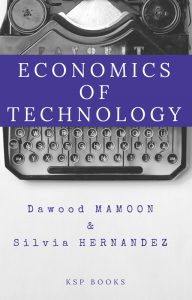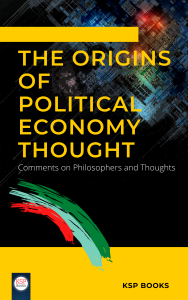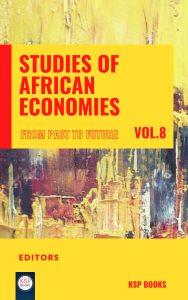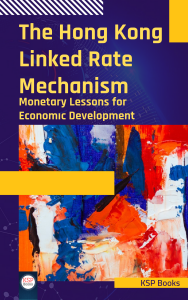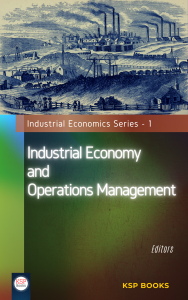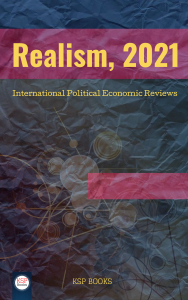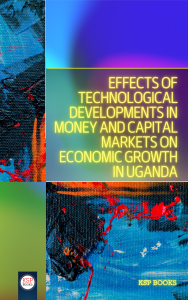By Mario Coccia
CNR, National Research Concil of Italy.
The Coronavirus Disease 2019 (COVID-19) is still circulating in 2022 with new variants (e.g., Delta and Omicron) that generate socioeconomic issues in countries. This contribution endeavors to clarify the origin of novel coronaviruses, factors determining the transmission dynamics of COVID-19 and the effects of non-pharmaceutical and pharmaceutical interventions of containment in society. These basic aspects of COVID-19 pandemic crisis can improve the preparedness of countries to cope with next pandemic threats and the negative effects of their socio-economic impact. This book is designed for policymakers and general readers that wish to clarify critical aspects of COVID-19 and that wish to expand their knowledge on these areas. Studies that I include here are integrated with cases study and empirical analyses underpinned in real contexts of nations. In particular, this book concentrates on selected topics of particular relevance to problems of COVID-19 pandemic crisis, and which meet the needs of the intended audience. The book is divided in four interrelated parts. <More>
By Kai-Yin Woo, Wing-Keung Wong, Tai-Yuen Hon & Wing-Kwong Au
Hong Kong Shue Yan University, Hong Kong
Asia University, Taiwan
Hong Kong Shue Yan University, Hong Kong
Hong Kong Shue Yan University, Hong Kong
This book has complied with three Journals papers and three working papers, a total of six papers. For all the journal papers, we have obtained permission from the Editors/Editors-in-Chief to include all the journal papers in our book and we have all the rights for our working papers. Thus, we do not have any copyright issue in our book. This book includes the part I: Savings: Chapter 1 would provide a positive contribution to the literature on saving behavior for Chinese communities; the part II Investment: Chapter 2 shows that investors are interested to know how long the bull run will last. While the Singapore markets may not be as efficient as that of the US. Chapters 3 and 4 are helpful for portfolio managers and investors to engage in real-life hedging practices and may also be useful for them to understand the volatility and return spillover effects between gold and different stock sectors in Hong Kong. <More>
2022 Collection
By Jan-Erik Lane
University of Geneva, Switzerland.
It is possible to present a brief summary of the subjects that the chapters in this book focus on.
Ch 1. The outcome of the COP27 confirms the PD game nature of the work of this UN club, CUT defeated by EMIT (emissions). The same will hold for forward COPs, until such time that the tipping points change the game for the great players in this global environment club.
Ch 2. The analytical-synthetic distinction keeps being of great interest. But why? Analytical sentences are camouflaged tautologies. They are not falsifiable, neither in this Kant’s world or in any of Leibniz’ possible worlds.
Ch 3. Communitarianism offers a rationale for the growing relevance of communities. <More>
By Steve Hanke & Bilal Kargı (Editors)
The Johns Hopkins University, USA
Ankara Yıldırım Beyazıt University, Turkey.
It is possible to present a brief summary of the subjects that the chapters in this book focus on.
Ch 1. This essay examines the Malayan Currency Board from its formation in 1938 to its dissolution in 1967. It analyzes the orthodoxy of the board using high-frequency data, such as monthly statistics of currency notes in circulation. Accompanying the essay is a spreadsheet workbook which presents high-frequency data of the board in digital format for the first time, as well as balance sheets and other financial statements.
Ch 2. Sri Lanka had a currency board system from 1884 to 1950 which maintained a relative stability in prices and the exchange rate. <More>
By Rafael Acevedo, Hugo J. Faria, Hugo M. Montesinos-Yufa, & Carlos Navarro
Creighton University, USA.
University of Miami, USA.
Ursinus College, USA.
Instituto de Estudios Superiores de Administración, Venezuela.
This book is based on an intuitive idea: National governors tend toward rapacity if not checked. In order not to be dominated and despoiled, the people—or the electorate—must have some way of making governors accountable for their spending. Honest elections are the most basic means of exerting such accountability, but they are not the only way. When governors are not fiscally accountable, we say they are “fiscally independent.” Inspired by historical divergent political-economic paths in England, France, Portugal, and Spain, we examine the modern conditionally estimated effects of government being fiscally independent. <More>
By Alan D. Anderson
Applied Economics, Global Health, and the Study of Business Enterprise, Johns Hopkins University, MD, USA.
The collapse of Enron in 2001 was due not as much to perfidy as it was to a deeply flawed business plan. Enron and its predecessors had participated in, and to some extent drove, the restructuring of the natural gas industry. For years, natural gas production, transportation and consumption had been a stable, highly regulated business. That stability collapsed in the 1970s and a new commodity-based industry emerged. In that process Enron grew rapidly and was very profitable. The deregulation of natural gas prices had a similar impact on the industry as major technological innovations had on other industries. Early movers made a lot of money, but eventually the opportunities diminished as new entrants drove down margins and stability returned. By the final deregulation of gas prices in 1993, the opportunities for entrepreneurial returns had essentially vanished. <More>
By Walter Friedman, Louis Galambos, Eric Godelier, Gwendolyn Gordon, Geoffrey Jones, Per H. Hansen, Eric W. Orts, Daniel Pope, Philip Scranton, Jeffrey L. Sturchio, R. Daniel Wadhwani, & Greg Urban
This book is dedicated to one of its co-authors, Professor Gwendolyn Gordon, who died at the much too early age of forty-one in December 2021.
Gwen Gordon was appointed as a member of the standing faculty in the Legal Studies & Business Ethics Department of the Wharton School of the University of Pennsylvania in 2013. Professor Gordon was a graduate of Cornell University and Harvard Law School, and she received her doctorate in anthropology from Princeton University. Prior to joining Wharton, she worked as a corporate lawyer with Shearman & Sterling in New York and London. <More>
By Hrabrin Bachev
Institute of Agricultural Economics, Bulgaria.
Unlike in many other countries, in Bulgaria, there is no comprehensive analysis of the governance, state, efficiency and evolution of the system of Agricultural Knowledge and Innovation System (AKIS). This chapter presents the results of a large-scale study on the governance, efficiency, and development of AKIS in Bulgaria. The Governance of AKIS includes diverse governing agents, and the variety of rules, mechanisms and modes for agents, and the process of governing, and the outcome (specific order and efficiency) of the governance. First, participants in the country’s AKIS and the type of their relations are specified. <More>
By Carlos Newland, Juan Carlos Rosiello & Roberto Salinas-Leon
The technological progress in our modern societies has witnessed the emergence of persons who deploy different means of communication across social networks, seeking to generate an impact among their audiences. These efforts in social media communications attempt to alter consumption preferences and patterns, political choices, as well as reinforce or modify opinions of all sorts and stripes. Individuals who attain greater relevance due to effects they trigger on third parties are characterized as influencers, and one of their preferred means of communication are online platforms or social media. Among them, Twitter stands out as the most conducive space for debates on ideas, political parties, or public policies. This social media platform is a microblogging service that allows a person to send short messages (up to 280 characters) that are displayed on a user’s individual page, and that are replicated on their followers’ pages. <More>
By Steve Hanke & Bilal Kargı (Editors)
The Johns Hopkins University, USA
Ankara Yıldırım Beyazıt University, Turkey.
It is possible to present a brief summary of the subjects that the chapters in this book focus on.
Ch 1. Mr. Chairman, thank you for this opportunity to express my views on “Venezuela’s Tragic Meltdown.” A great deal of the commentary on the topic is polemical, and more-or-less political and ideological self-justifications of one sort or another. In consequence, the discourse is often confused and confusing. In an attempt to bring some clarity to the topic, I will focus on the one necessary condition that must be satisfied before the Venezuelan economy can be turned around. Inflation must be stopped before stability can be established. Stability might not be everything, but everything is nothing without stability.
Ch 2. This chapter describes the methodology and presents the results of a Datincorp survey on Venezuela’s economic crisis. <More>
By Louis Galambos & Franco Amatori
Johns Hopkins University, USA.
Bocconi University in Milan, Italy.
Since the Keynesian revolution in economics, a standard part of the profession’s analytical framework and an argument for government support for investment has been the multiplier concept. This classical multiplier works through consumption in an equilibrium model. Our contention is that there is also an Entrepreneurial Multiplier that works directly through investment by incentivizing or forcing investments in innovation in a dynamic, disequilibrium model. These investments have been analyzed as “spill-overs” or responses to “bottlenecks” or Schumpeterian examples of emulation. We suggest that the surges of innovation in capitalism were even broader than Schumpeter did and that they can best be explored using a multiplier paradigm. We start that exploration by briefly examining selected patterns of entrepreneurship in the first, second, and third industrial revolutions. Our emphasis is on the sequences of innovations, the manner in which they are multiplied, and their economic, cultural and political consequences. We delve into the First Industrial Revolution in New England and Lombardy, the Second Industrial Revolution in the United States and France, and the Third Industrial Revolution in America and Europe. In all three of these dramatic capitalist transitions there is evidence of the entrepreneurial multiplier at work, broadening, deepening, and extending the impact of the major innovations.<More>
By Jan-Erik Lane
University of Geneva, Switzerland.
It is possible to present a brief summary of the subjects that the chapters in this book focus on.
Ch 1. The principal-agent models may be employed to elucidate central problems in interaction between prin-cipals and agents in both policy implementation and public policy-making concerning performance and remuneration. One then hits upon the double principal-agent relationships that are typical of the policy cycle, from policy-making to policy implementation and back: 1) government as principal for agents in public service delivery; 2) the population as principal for political agents under various forms of rulership.
Ch 2. Today there is a set of well-ordered countries to which many people would liķe to move. What is their advantage? Reply: they are well-ordered im the public and private sectors adhering to the Keynesian model of a mixed economy. <More>
By Wing-Keung Wong, Kai-Yin Woo, Wing-Kwong Au, Tai-Yuen Hon & Michael McAleer
Asia University, Taiwan & Hong Kong Shue Yan University, Hong Kong.
This book has complied with five Journals papers and two working papers, a total of seven papers. For all the journal papers, we have obtained permission from the Editors/Editors-in-Chief to include all the journal papers in our book and we have all the rights for our working papers. Thus, we do not have any copyright issue in our book. In this book, we first write two papers (Chapters 1 and 2) to review the theory and literature on market efficiency, behavioural finance and market anomalies. Then, the readers can find it easy to understand the key concepts of this book. One of co-authors, Wing-Kwong Au, revises two papers (Chapters 3 and 4) which were written by Tai-Yuen Hon about the behaviour and investment decision of small investors in the Hong Kong Stock Market, with the empirical results basically consistent with the predictions of behavioural finance theory. <More>
By Jan-Erik Lane
University of Geneva, Switzerland.
It is possible to present a brief summary of the subjects that the chapters in this book focus on.
Ch 1. Global warming is the result of an enormous drive for energy during the last 150 years. And demand keeps going up making the COP goals unachievable. I will argue for this inevitability by means of both global and local evidence.
Ch 2. Global warming is the result of an enormous drive for energy during the last 150 years. And demand keeps going up making the COP goals unachievable. Fossils will still dominate with renewables as only increments. Author supports this inevitability argument with data about global trends and local analysis of a few of the heavy emitters of CO2s. Since the demand for energy is still rising, one understands why China and India as well as Brazil and Indonesia renege on the COP ambitions. In fact, all states in the COP club renege somehow, because the demand for energy is overwhelming. Despite this several countries face today energy shortage. <More>
By Dean Buckner & Kevin Dowd
The Eumaeus Project, UK & Durham University, UK.
• The UK equity release sector is permeated by poor valuation practice: as far as we are aware, not a single equity release firm is valuing its No-Negative Equity Guarantees (NNEGs) in a scientifically valid manner.
• This NNEG under-valuation problem is on a large scale and implies correspondingly large over-valuations of Equity Release Mortgages (ERMs).
• The Discounted Projection or ‘Real World’ approach used by the equity release industry is inherently flawed and produces valuations that violate bounds that are known to be inviolable.
• The only scientifically valid valuation approach is the Market Consistent approach, which is also the only approach compatible with accounting principles and technical actuarial standards.
• This manual provides a guide that explains how NNEGs and ERM should (and should not) be valued. <More>
By Christopher L. Culp & Steve H. Hanke (USA)
The Johns Hopkins University, USA.
During the 1992-93 period, Prof. Culp and I wrote “The Hong Kong Linked Rate Mechanism: Monetary Lessons for Economic Development.” We did this, in part, at the suggestion of the late Sir Alan Walters – who was our colleague and collaborator at Johns Hopkins. While serving as Prime Minister Margaret Thatcher’s personal economic adviser, Sir Alan played a key role in the reintroduction of Hong Kong’s currency board, in 1983. We were also encouraged by the architect of Hong Kong’s currency board, John Greenwood.
Just why did John and Sir Alan encourage us? Well, at the time, I was engaged in designing currency board systems for countries in Latin America and the former Soviet Union. During the advocacy phase of my activities, many people inquired about the workings of Hong Kong’s currency board. Since there was no comprehensive piece of research on this subject available at the time, my then-student Prof. Culp and I decided to write our own paper. Alas, we were too busy with other activities to attend to its publication.
In the years since Prof. Culp and I wrote “The Hong Kong Linked Rate Mechanism: Monetary Lessons for Economic Development,” the unpublished paper has sustained a certain degree of interest. In consequence, we have decided to publish the original 1993 paper, without amendments.
Since Hong Kong’s currency board has evolved from what it was in 1993, we have invited John Greenwood, who currently serves on the Hong Kong Monetary Authority’s Currency Board Advisory Committee, to present a brief account of the major changes that have occurred in the HKMA’s structure since we wrote our 1993 paper.
Taken together, as they should be, the Culp-Hanke and Greenwood papers provide the reader with a clearer understanding of how Hong Kong’s currency board works and how it has evolved. <More>
By Johnson Modika & Paul MPake Nyeke
University of Douala, Cameroon.
Chapter 1: For decades crisis has been considered a major obstacle to socio-economic development of many African countries south of the Sahara. It is challenging because it affects all economic sectors and the population. The paper analyses the challenges of the causes of Anglophone crisis, and its consequences in Cameroon in general. Asystematic random sampling technique of one hundred and fifty (150) households, that is seventy five (75) town dwellers households and seventy five (75) food crops productionhouseholdsin the city of Kumba and Bamenda and its environ was adopted. The issues raised by the respondents were statistically analyzed by the use of Statistical Package for Student Survey, maps were produced by the cartographic software Arcgis, excel was use to realize figures and tables. Results from the findings are presented as follows; It was revealed that the Foumban Conference and decision taken by the former and present presidents constitute a major problem that will always escalate to conflict if federation is not implemented as accepted in the Foumban Conference. <More>
By Muhammad Mustafa Rashid
University of Detroit Mercy, USA.
Chapter 1: The purpose of this chapter is to provide insights into how the proliferation of globalization has impacted labor markets both in a advanced industrialized nations and well as developing nations. Insightful analysis will be drawn from Oatley (2011) on division of labor, Jaumotte & Tytell (2007) on labor compensation, Hahn & Narjoko (2013) on the impact on South Asian Countries, Basu (2016) on wage as a share of GDP and Wallace, Gauchat & Fullerton (2011) on the impact of globalization and labor markets on inequality.
Chapter 2: Building on the system of reason provided for by the Greek philosopher and specifically Aristotle, St. Thomas Aquinas built a comprehensive system and theory of natural law which has lasted through the ages. The theory was further developed in the Middle Ages and in the Enlightenment Ages by many a prominent philosopher and economist and has been recognized in the Modern Age. The natural law-theory and system has been repeatedly applied to the spheres of economic thought and has produced many lasting contributions such as private property rights and individual rights. In recent times with the collapses of the financial system and rapid globalization, there has been a renewed interest in the application of natural law theory to economics to counter a certain anthropology and distortion of values created by a modern economic system of self-preservation deriving its insights from the philosophies of Thomas Hobbes and Niccolo Machiavelli.<More>
By John Greenwood
MA and PhD, Edinburgh University, UK.
A head of Chapter 1 we feature an exclusive joint interview conducted by Petia Minkova, Deputy Editor in Chief of 168 Hours (a Bulgarian weekly publication) with Prof. Dr. Steve H. Hanke and John Greenwood .
Chapter 1 first traces the evolution of Milton Friedman’s views on fiscal policy from his early acceptance of the prevailing Keynesian orthodoxy to his later adoption of an entirely contrary view that fiscal policy played almost no role in macroeconomic stabilization. Until the late 1940s or early 1950s Friedman believed that fiscal policy should be the primary tool of government policy in macroeconomic stabilisation – the management of real GDP growth and inflation. However, by 1953 he had shifted to the diametrically opposite view that fiscal policy played almost no role in macroeconomic stabilisation and that as a result policymakers should rely principally on monetary policy. Second, the chapter explores some of the theoretical arguments Friedman used to defend his new position. Third, the chapter takes up a challenge that Friedman himself proposed to assess the relative importance of monetary and fiscal policies by comparing a series of episodes when fiscal and monetary policies were acting either in the same direction or in opposite directions. All the examples cited confirm Friedman’s finding that monetary policy invariably dominated over fiscal policy in determining macroeconomic outcomes, and particularly when the two policies were acting in contrary directions.. <More>
By Jan-Erik Lane
University of Geneva, Switzerland.
It is possible to present a brief summary of the subjects that the chapters in this book focus on.
Ch 21. The beginnings of this century sets up the dilemma of more energy or betterment of the environment. If “energy” is the capacity to do work, as often said, then it can be made profitable. If protecting the ecology of Earth is what the COP reunions of the UN aim at, then it is hardly a surprise that China and India reneged against the original formulation of phasing out coal power. Both countries use a lot of coal plants to get cheap energy for rapid economic development. This is dismal fact for COP endeavours.
Ch 22. One may approach the history of political thought through a variety of themes that various philosophers share but handle very differently. I wish here to capture a few trends in political thought by analysis of the following two long lived themes, namely: naturalism against moralism as well as determinism versus voluntarism. <More>
By Dean Buckner & Kevin Dowd
The Eumaeus Project, UK & Durham University, UK.
As the UK economy enters the COVID-19 downturn, the Bank of England (BoE) continues to maintain that the UK banks are strongly capitalised. Yet there is considerable evidence that they are anything but.
The core metrics of the Big Five UK banks have deteriorated sharply since the New Year, and even more since the end of 2006, i.e., the eve of the Global Financial Crisis. Their market capitalisation is now £140.6 billion, down 61% since December 2006; their average price-to-book ratio is 39.2%, down from 255% at end 2006; their average capital ratio, defined as market capitalisation divided by total assets, is 2.3%, down from 11.2% at the end of 2006; their corresponding leverage levels are 43.3, up from 8.9 (end 2006). By these metrics, UK banks have much lower capital ratios and their leverage is nearly 5 times what it was going into the previous crisis.
These metrics indicate a sickly banking system. If the banks were in good financial shape, their PtB ratios would be well above 100% and their capital ratios well above current levels. Traditional rules of thumb also suggest that leverage levels should be no greater than 10 or 15 to be considered safe. <More>
By Takaharu Ishii
Business Breakthrough University, Japan.
Chapter 1. This section is examined statistically whether the importance of the motives for act and the acceptances for lower wage and labor incentives is different between each age group. Above results shows young age group is “self-actualization” as important motive, old age group is “moral” as it. And old age group has higher labor incentives when it is suggested higher wage than the wage according to my ability, and when it is the lifetime employment system. Older age group think “moral” as important motive. They think that want to rewarded with the lifetime employment system and higher wage. It checked that action motives differed according to a generation. Moreover, Prospect Theory, the efficiency wage hypothesis, and the relative wage hypothesis were satisfied, and it was checked that the influences differ in his twenties as compared with other generations. Moreover, the rate of desiring lifelong employment system as a senior was large, and his twenties had many people who do not desire lifelong employment system strongly. This shows that consciousness change and a behavioral change may have arisen in that time in 1990 which shifted to the market economy bordering on people who were his teens, i.e., his present twenties, and his 30’s. It is shown that there is no big difference the results of transition country, the results of advanced nations, especially the result of Japan. <More>
By Clark Johnson
USA.
I wrote decades ago on the causes of the Great Depression, emphasizing the roles of both the post-WW1 undervaluation of gold and the deflationary policies of the Federal Reserve and, even more, of the Bank of France. Since publication of Gold, France, and the Great Depression (1997), we have seen the Asian crisis of the late 1990s, the Great Recession of 2007-2009, a subsequent decade of slow growth, and the pandemic and subsequent inflation of 2020-2022. Contents here include comments on each of these. I also became interested in theoretical issues involving monetary and fiscal policy, especially as they appear in J.M. Keynes and in Robert Mundell. Elsewhere, it has loomed for me as an unfinished task to understand better why Cold War events, including Berlin and Vietnam, unfolded as they did. I include two papers here that are clarifying, including of the roles of US and international leaders. Finally, I spent years working on economic development and political reconstruction in the Middle East and central Asia, and include observations on what happened there and what should have been done differently. <More>
By Jan-Erik Lane
University of Geneva, Switzerland.
It is possible to present a brief summary of the subjects that the chapters in this book focus on.
Ch 11. In political thought, Hobbes and Spinoza form an interesting and fascinating couple. They lived parallel lives and wrote much on similar topics: humans, contracts, the state and religion. Whereas Hobbes is considered one of the absolute top political philosophers, Spinoza has only been recognized as a great philosopher, due to his Ethics. But on close examination, I dare say that Spinoza outperforms Hobbes also on political theory and religion. The aim of this paper is to call for a re-evaluation of Spinoza’s political and religious philosophy.
Ch 12. Spinoza has a formidable reputation as an abstract philosopher in the rationalist school of the 17th century. This standard image of him stems from his elegant Ethics, examining men and women with the Euclidean method of axioms, corollaries and implications. He launched a fascinating theory about moral naturalism and ethical determinism, much debated by other great philosophers. However, he also has two political texts, one on religion and another on political regime. They are much more reader friendly and the arguments are simple, following from the foundations in Ethics. At least, Spinoza so believed. This paper presents systematically the political theory in Tractatus Politicus, which has received too little attention. <More>
By Takaharu Ishii
Business Breakthrough University, Japan.
Chapter 1. This chapter provides theoretical conditions for a stable political system. This chapter has the trade-off that military support for the rulers simultaneously encourages military build-up, resulting in closed authoritarianism, electoral authoritarianism and stabilising military regimes, while at the same time giving the military a stronger voice, which is a cost for the rulers. Democracies that are not aligned with the military are shown to be unstable. Despite the assumption of a path-dependent model, electoral authoritarianism is a stable system in countries where the initial political system is strengthened, but where the balance between citizens and the military is struck and the amount of real resources is not sufficient for the number of resources demanded by the citizens. <More>
By Noé Ndjeck
University of Douala, Cameroon.
The funding of SMEs is a real problem mainly in poor countries where it is difficult to get financial resources, but also almost impossible to cover an asset intended to be used in the company for years by a resource of the same duration. SMEs like any company seeking to survive and develop explores new ways to achieve secure funding. As banks hardly finance SMEs, they have to resort to alternative funding which is essentially short-term. To inform SMEs of the range of alternative funding methods and to guide them in their choice, we thought it necessary to carry out a theoretical assessment of alternative funding for SMEs. <More>
By Jan-Erik Lane
University of Geneva, Switzerland.
It is possible to present a brief summary of the subjects that the chapters in this book focus on.
Ch 1. Karl Popper discovered the link between the open society and scientific discovery with the help of his analysis of growth of scientific theories (Popper, 1945, 1959). Only in an open society can hypotheses or models be falsified. His principle of falsification applies not only to scientific argument but also to social science beliefs and political propaganda. Thus, democracy nourishes an open society seeking the truth. Actually, democracy is the sole political regime that promotes the truth in an open society. The rationale for democracy is to be found in game theory, in particular the principal agent framework in the economics of information.
Ch 2. What is true information in today’s world? The hunt for information is not only in the private sector―market trends and enterprise data, but also on the public sector. Information is strongly linked with incentives; leaking news and you have an extra rent. This paper tries to model the crucial role of information and its incentives in government and it started in the public sector. <More>
2021 Collection
By Heinz Schimmelbusch
Doctorate in Economics from the University of Tuebingen.
Communism, as a revolutionary economic concept, was introduced to the world via the writings of Karl Marx. In practice, it made its big entrance via the Russian Revolution in 1917. The Revolution was instigated and managed by Vladimir Lenin and led to the establishment of the Soviet Union. At its core, communism’s basic idea was to eliminate individual property rights today, while, at the same time, promising the comrades a paradise in the distant future. For the purpose of this preface, allow me to search for the word “communism” on my curriculum vitae to see what shows up. <More>
By Ana Paula Martins
Universidade Católica Portuguesa, Portugal.
Chapter 1. The analysis discusses the labor market equilibrium under union oligopoly, where unions represent homogeneous workers and use employment strategies. The following points are addressed: 1. The labor market outcomes in the presence of; a. uncooperative behavior among unions; b. uncooperative environment with a leading union; c. collusive (coordinated unions) behavior among unions; d. globally efficient bargaining, are confronted. A specific example with a Stone-Geary utility function and linear demand is forwarded. 2. Supply dynamics may push up employment and, therefore, the number of unions. In equilibrium, some bounds exist to the number of unions the market can support, which are investigated in the example. <More>
By Bachar Fakhry
University of Lahor, Pakistan.
This chapter (I) We celebrate the 20th anniversary of the introduction of the Euro by reviewing one of the key elements: the integration of the Eurozone financial markets. Introducing a multivariate volatility test based on the asymmetrical BEKK (ABEKK) multivariate GARCH model of volatility to analyse the stable market pre-condition hypothesis of the integrated Eurozone equity markets across the euro’s timeline. Extending our analysis to the impact of the rise of the populist political movement on the Eurozone financial markets during the last few years. The first and most important contribution is the introduction of a multivariate volatility test based on the ABEKK to analyse the stability of the integration in the Eurozone equity markets. However, another key contribution is the analysis of a period where the whole concept of European integration is coming into question by the rise of the populist political movement. <More>
By Mario Coccia
CNR, National Research Concil of Italy.
One of the current questions in the contemporary scientific debate is to explain factors determining the diffusion of the Coronavirus Disease 2019 (COVID-19), a new viral infection that is generating a severe acute respiratory syndrome with serious pneumonia to manifold people worldwide that may result in progressive respiratory failure and death. To reduce the number of total deaths and infected individuals of COVID-19, many countries, universities, public and private research organizations have accelerated the scientific research production generating new knowledge about this new Coronavirus disease, but also many people/organizations not involved in research activities sought to provide innovative solutions, especially adopting what they already know, such as current technologies. This on-going accumulation of knowledge, driven by an accelerated velocity of science production on COVID-19 is due to a process of systematic research in labs to generate effective vaccines, new therapies, and new antiviral drugs that can counteract this global public health threat and future epidemics similar to COVID-19. <More>
By Steve H. Hanke & Kurt Schuler
The Johns Hopkins University, USA.
Center for Financial Stability New York, USA.
The International Center for Economic Growth, through its offshoot ICS Press, published the original version of this study in 1994. With their permission, we posted a slightly updated version on the Internet in 2000. We thank them again in connection with this edition, which updates a few references to events but is not a comprehensive revision. We are working on a forthcoming, larger book about currency boards with Nicholas Krus that will summarize our quarter-century or more of thinking on the subject.
This book has had a substantial influence. It has been translated into Bulgarian, French, Spanish, Turkish, and Georgian. A modified version, adapted to the specific circumstances of Lithuania, influenced that country’s monetary reform of 1994 (Hanke & Schuler 1994b). Both an unauthorized and an authorized Bulgarian translation were widely read during the high inflation that preceded Bulgaria’s adoption of currency board-like rules in 1997 (Hanke & Schuler 1996, 1997). Most recently, the book has been published in Farsi by the Majlis (Parliament) Research Center of Iran and in Arabic by the Lebanese Institute for Market Studies in Tripoli, Lebanon. <More>
By Hrabrin Bachev
Institute of Agricultural Economics, Bulgaria
Despite huge progress in the theory and practice of this new area, still there is no consensus on how to assess the sustainability of agro-ecosystems due to diverse understandings, approaches, methods, employed data, etc. In Bulgaria there are practically no deep studies on sustainability level of diverse agro-eco-systems. This paper tries to fill the blank and assesses the sustainability level of agro-ecosystems of different type in Bulgaria. First a holistic hierarchical framework for assessing integral, economic, social and ecological sustainability of agro-ecosystems in Bulgaria is suggested including 17 principles, 35 criteria, and 46 indicators and reference values. <More>
By Ana Paula Martins
Universidade Católica Portuguesa, Portugal.
Evaluation of BA programs is periodically conducted in the Portuguese public education system, involving inspection of indicators of teaching patterns and student achievement. In its course, primary information is gathered which provides a natural database for a more complex multivariate study of the teaching process. It was the purpose of this research to depart from information collected for the 2000/2001 Self-Evaluation report of the Business BA program of the Faculdade de Ciências Económicas e Empresariais of Universidade Católica Portuguesa and search for identifying patterns of the teaching-mix, and along with it, of student achievement. On the one hand, principal component decomposition provided a general view of the programme main features; discriminant analysis confirmed both scientific area and credit score category as providing significant affiliation identity to the programme courses. <More>
By Charis Vlados & Bachar Fakhry
Democritus University of Thrace, Greece.
University of Lahor, Pakistan.
A repositioning of the theoretical instruments of development and growth in the context of economics and political economy that we have at our disposal to date seems necessary, especially after the structural transformation caused by the COVID-19 socio-economic and pandemic crisis. Specifically, the overcoming of the COVID-19 era of crisis seems to depend on how we will manage to re-perceive the theory of economic development and apply its proposals in new economic policies, in global terms. In this context, this article examines whether the conceptual and “therapeutic” foundations of development economics have today the necessary potential to cope with structural changes caused by the ongoing global socio-economic crisis. <More>
By Hrabrin Bachev
Institute of Agricultural Economics, Bulgaria.
In Bulgaria, like in many other countries, practically there are no comprehensive assessments of the governance sustainability of agriculture and its importance for the overall agrarian development. This study tries to fill the gap and suggests a holistic framework for understanding and assessing the governance sustainability of Bulgarian agriculture. The newly elaborated approach is “tested” in a large-scale study for assessing the governance sustainability of country’s agriculture at national, sectoral, regional, eco-system and farm levels. The study has proved that it is important to include the “missing” Governance Pillar in the assessment of the Integral sustainability of agriculture and sustainability of agro-systems of various type. Multiple Principles, Criteria and Indicators assessment of the Governance sustainability of Bulgarian agriculture indicates that the Overall Governance Sustainability is at a “Good” but very close to the “Satisfactory” level. Besides, there is a considerable differentiation in the level of Integral Governance sustainability of different agro-systems in the country. <More>
2020 Collection
By Steve H. Hanke (Eds.)
The Johns Hopkins University, USA.
In 1995, I founded the Johns Hopkins Institute for Applied Economics, Global Health, and the Study of Business Enterprise. One of the purposes of that research institute was to continue a research program on currency board systems, which was established in the early 1980s. The program has included the works of many leading experts on currency boards and has benefitted enormously from the involvement of my former post-doctoral student and long-time collaborator Dr. Kurt Schuler. Many of the papers in this volume focus on various aspects of currency boards. They are original because they are based on primary data. Indeed, the Johns Hopkins research program on currency boards, which is directed by Dr. Schuler and me, has now collected and digitized all of the financial data for virtually all of the currency boards that have ever existed. So, just what is a currency board? <More>
By Siméon Maxime Bikoué & Kwami Ossadzifo Wonyra (Eds.)
Advanced School of Economics and Commerce, University of Douala, Cameroon.
LaRSEG, University of Kara, Togo.
Ch.1) This research analyses the effects of structural transformation on sectoral employment and sectoral labour productivity in WAEMU countries. To achieve this, the methodological approach adopted consists of decomposing the economy into three sectors, namely agriculture, industry and services. The results show that the agricultural sector employs 70% of the available labour force as against 10% and 20% respectively for the industrial and service sectors. In terms of value added, the agricultural (rural) sector and the service sector contribute 40% each against 20% for the industrial sector to the Gross Domestic Product (GDP) for the Sahelian countries. <More>
By Marlina Flassy
Papua Institute for Science and Technology, LIPTEK-Papua.
The title of this book “Deficit of Women’s Human Right in Papua Province: A conceptual framework on family and women in Papua: Unemployment, crime and socio-economic issues”, is dealing with Mapping of Criminal Trafficking in Persons (TPPO), Domestic Violence (KDRT) and Women Employment (TKW) in Papua Province. It is carried the efforts to protect the human rights. For this study in particular, is aimed at women (and children) in the Papua Province in specific. Mapping is allocated in 4 sample areas, namely Jayapura City, Nabire Regency, Mimika Regency and Boven Digoel Regency. <More>
By Siméon Maxime Bikoué
Advanced School of Economics and Commerce, University of Douala, Cameroon.
This chapter (I) aims to study the impact of remittances from African migrants on their home countries’ growth and development. These funds constitute a steadily increasing financing means in all these countries, even though development aid is still the preferred financing method. To highlight the role of these funds, we relied on a number of experiences as far as their targets and uses are concerned. Globally speaking, stylized facts based on case studies show that remittances have a positive impact on migrants’ home countries’ economies. In particular, they reduce household poverty and thereby increase their well-being. In addition, they stimulate local economic activity and growth. <More>
By Steve H. Hanke (Eds.)
The Johns Hopkins University, USA.
In 1995, I founded the Johns Hopkins Institute for Applied Economics, Global Health, and the Study of Business Enterprise. One of the purposes of that research institute was to continue a research program on currency board systems, which was established in the early 1980s. The program has included the works of many leading experts on currency boards and has benefitted enormously from the involvement of my former post-doctoral student and long-time collaborator Dr. Kurt Schuler. Many of the papers in this volume focus on various aspects of currency boards. They are original because they are based on primary data. Indeed, the Johns Hopkins research program on currency boards, which is directed by Dr. Schuler and me, has now collected and digitized all of the financial data for virtually all of the currency boards that have ever existed. So, just what is a currency board? <More>
By Siméon Maxime Bikoué & Hassan Tawakol A. Fadol (Eds.)
Advanced School of Economics and Commerce, University of Douala, Cameroon.
Faculty of Econometrics and Applied Statistic, College of Business, Al Jouf University, KSA.
(Ch.1) The aim of this chapter is to try to explain governance failures in Sub-Saharan Africa and to identify reforms which can lead to good governance. The failures are mainly due to institutions that do not work properly, corruption, and lack of real democracy. Governance reforms can be both institutional and political. The political reforms should promote and reinforce democratic practices. Institutions should guarantee the rule of law and limit the elite’s economic and political power. <More>

By Mangalani P. Makananisa & Benjamin Yamb (Eds.)
South African Revenue Service, South Africa.
University of Douala, Cameroon.
(Ch.1) The objective of this paper is to determine the gender wage gap in the informal sector in Togo. To do so, the method of decomposition of the refocused influence function (RIF) was applied to data from the integrated regional survey on employment and the informal sector (ERI-ESI) in WAEMU member states carried out by the National Institute of Statistics and Economic and Demographic Studies (INSEED) in Togo (2019). The results reveal that men are better paid than women throughout the wage distribution. <More>

By Tamara Todorova
Department of Economics, American University in Bulgaria, Bulgaria
This book is a study of the multinational corporation from the transaction cost perspective. The firm is a system of administrative relationships based on a nexus of contracts and the strong interdependence of specific assets. The firm substitutes the market mechanism when, in view of resource allocation and the existing transaction costs, it is a more costly instrument than the entrepreneur with his coordinating role. Using the theory advanced by Ronald Coase and Oliver Williamson we investigate some key features of the multinational corporation. <More>
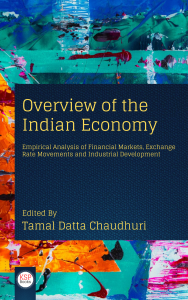
By Tamal Datta Chaudhuri (Editor)
Calcutta Business School, West Bengal, India
This book brings together papers which highlight various aspects of development of the Indian economy in the recent past. It covers Indian financial markets, movements in the exchange rate, and value creation and innovativeness of the manufacturing sector. In the various chapters, application of analytical tools like R, Artificial Neural Network (ANN), Clustering are demonstrated. While two papers dwell on sectoral characteristics and portfolio choice for value creation, two papers focus on understanding stock market volatility and the sources of volatility. <More>

By Dickson T. Ndamsa & Benjamin Yamb (Editors)
University of Bamenda, Cameroon.
University of Douala, Cameroon.
Child mortality is an important demographic, health, and development. It is for this reason therefore that the reduction in child mortality is a worldwide target, and was one of the most important key indicators in the Sustainable Development Goals and has been reconsidered as vital in the recent Millennium Development Goals. Following this, this paper attempt to assess the drivers of child mortality in Cameroon using the 2011 Cameroon Demographic Health Survey data collected by the National Institute of Statistics (NIS).To assess the effect of safe drinking water on child mortality in Cameroon. Specifically, the study scrutinises. <More>
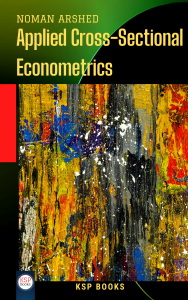
By Noman Arshed
University of Management and Technology, Lahore, Pakistan
The project to write a book on applied Econometrics when I was granted with the Econometrics II course to teach to MPhil Economics, the contents of this book were developed from the lecture material which is competitive to course contents of The University of Edinburgh UK, a university where I did MSc in Economics, exploring other books, personal experience and the critical discussion by the students. The variety of contents which this book covers meet no competition with other universities in the city. <More>
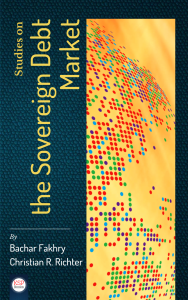
By Bachar Fakhry & Christian R. Richter
University of Lahore, School of Accountancy & Finance, Lahore, Pakistan.
German University in Cairo, Faculty of Management Technology, Egypt
The Sovereign Debt Market is an essential section of the global financial market. In essence it is the main route for governments to cover any fiscal deficit in their budget. As of end of 2018, the market was US$188 trillion according to the IMF report on 17 December 2019. The market was long regarded as a safe haven for investors, especially the US treasuries and German Bunds. However in recent years the market has suffered several crises leaving investors questioning their high quality ratings. In this book we look at the efficiency and stability of the sovereign debt markets at the heart of the crises: US, German, Greek, Italian Portuguese and Spanish sovereign debt markets. We ask ourselves are these markets moving according to the Efficient Market Hypothesis or Behavioural Finance Theory? <More>
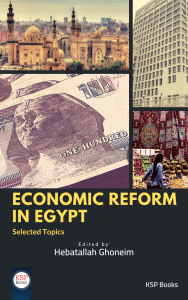
By Hebatallah Ghoneim
German University in Cairo, Egypt
Wave of revolution had proliferated Arab World since December 2010 creating a cutting edge in history. Revolution activities had started in Tunisia and spread from west Arab community in Mauritania to east in Bahrain. Revolution had taken the shape of civil resistance through protests, marches and media awareness campaign. Citizens are eager to experience an improvement in their wellbeing and daily activities, this book highlights selected economic reform issues that affect the daily activities of each Egyptian citizen. <More>
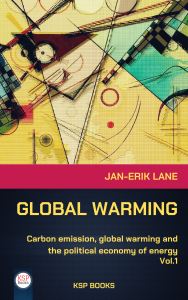
By Jan-Erik Lane
University of Geneva, Switzerland
I came across global warming for the first tite at a visit to late Aaron and Mary Wildavsky in their Oakland home around 1990. When I raised concern about the future and climate change, the Wildavsky couple reacted strongly, telling me that it was just the Mother of all scares. If environmentalism was more political ideology than merely science – the cornucopian thesis – than how could I be so wrong? <More>
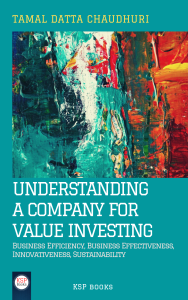
By Tamal Datta Chaudhuri
Calcutta Business School, West Bengal, India
Teaching courses on Financial Management, Security Analysis and Portfolio Management, Corporate Finance and Critical Analysis of Organizations requires reference to profit and loss accounts and balance sheets of companies. The last course that I have been teaching over the years also refers to qualitative traits of companies like strategy, vision and leadership qualities. Reading annual reports of companies is essential to appreciate the above mentioned courses and in Calcutta Business School we inculcate this habit among our students. This also helps in delivering lectures in Marketing, Operations Management and Human Resource Management. <More>
2019 Collection

By Ana Paula Martins
Universidade Católica Portuguesa, Portugal
This chapter explores the dynamic potential of point-wise utility functions optimization of representative agent economies. Such functions were generically considered to depend upon current consumption and wealth to be made available for next period usage or income generation, implying an endogenous (pseudo-)rate of time preference. At first inspection, the framework reproduced closely the dynamics and steady-state properties of the traditional Solow-Swan and Ramsey models – with population growth, exogenous technical progress, land, or increasing returns to scale – as well as, when human capital/knowledge was introduced, the Lucas-Uzawa endogenous growth set-up. <More>
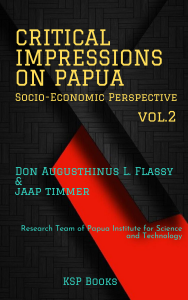
By Don Augusthinus Lamaech Flassy
Papua Institute for Science and Technology/LIPTEK-Papua
Constitution Vis-A-Vis Constitution Indonesian 1945 Versus Papuan 1999
There is tolerance merger of Unity in Diversity versus solidarity merger of Togetherness in Diversity as poles of spanning the natural and engineering efforts are not natural to make or maintain existing fused together. Shown by the spirit of Indonesia’s 1945 Constitution versus Papua’s 1999 Constitution. <More>
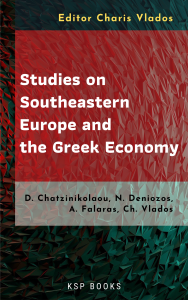
By Charis Vlados (Editor)
Democritus University of Thrace, Greece
We are experiencing a phase of profound restructuring of world capitalism. Several phenomena and developments lead us to observe a restructuring and crisis that take place upon the previous phase of globalization. In our view, the current global crisis is a socioeconomic “gameplay” of planetary reach, where the balanced and healthy reproduction of the past globalization is over. Moreover, we should notice that this theoretical approach cannot be a superficial or sporadic one but structural and systematic. <More>

By Elie Ngongang
Youssef Oukhallou
Ch.1) This chapter assesses the impact of road infrastructure investments on the structural competitiveness of Burkina Faso’s economy. After retaining the period from 1980 to 2015, the estimate of the Model to Error Correction (ECM) revealed that investment in road infrastructure positively and significantly affects the structural competitiveness of the economy. However, this incidence varies over time. In fact, the elasticity of structural competitiveness compared to road investments is 0.06 in the short term and 0.32 in the long term. In view of these results, it appears that the implication of economic policy that emerges is that an increase in investment in road infrastructure is a policy of gaining structural competitiveness of the country’s economy. <More>

By Bachar Fakhry
University of Lahore, Pakistan
After five years of research into the hot debated and my chosen topic of behavioural finance, it has become obvious that the field is a major area of studies. Over the years I have tried to provide empirical evidence that markets do tend to follow trends set by theories of behavioural finance. The evidence I presented surround the key events since the millennium; events such as the introduction of the euro, the global financial and eurozone sovereign debt crises and Brexit. As can be seen from these events, I have tended to mainly concentrate on the reaction of market participants in the European Union. <More>

By Lingling Wang
Worcester State University, USA
Aysun Ficici
Southern New Hampshire University, USA
Bo Fan
Worcester State University, USA
This book aims to explore one of the most important aspects of knowledge management, knowledge transfer in multinational enterprises (MNEs). It examines this knowledge transfer process from two distinct perspectives: intra-firm and inter-firm. Intra-firm transfer of knowledge refers to the knowledge flow between headquarters and subsidiaries and inter-firm transfer is defined as the knowledge transfer between partners in international joint-ventures (IJV). Specifically, it attempts to investigate the factors that influence the intra-firm knowledge transfer process and the willingness to share knowledge between partners in IJVs, in order to improve the performance of MNEs. Since willingness to share knowledge between partners is more complex than that between parent and subsidiary due to the difference in ownership structure, if MNEs can manage the willingness to share knowledge in IJVs, then dealing with it between parent and subsidiary should be much easier. <More>

By Mario Coccia
National Research Council of Italy
How does technology evolve? The book confronts this question here by developing the theory of technological parasitism, which endeavors to analyze and explain, with a new perspective, the relationships supporting the evolution of complex systems of technology in society. This study is part of a large body of research on the evolution of technology started in 2016 at Arizona State University (Center for Social Dynamics and Complexity, Tempe AZ, USA), continued at Yale University in 2019 (School of medicine, New Haven CT, USA) and now is ongoing at National Research Council of Italy (Torino, Italy).<More>

By Don Augusthinus Lamaech Flassy
Papua Institute for Science and Technology/LIPTEK-Papua
In particular, the volume contains four chapters: I. Overlapping of Papuanistiecs and Melanesianology: The boundary between Papua and Melanesia is a matter of doubt and uncertainty. To mention Papua is also Melanesia in it. Similarly to mention Melanesia also exist Papua in it. As Melanesia, Papua is a sense of pluralism because of the distinctive coloring of the inhabitants and ethnic groups as well as the domestic pattern in the Papua Land of Islands or Sub-Continental of New Guinea. <More>

By Charis Vlados (Editor)
Democritus University of Thrace, Greece
This volume—which is a collection of published articles by the “Stra.Tech.Man Lab” research team—focuses on and examines the dynamics of local systems as the principal contributors to overall socioeconomic development. Our goal is to clarify that local development is a phenomenon that goes beyond the traditional regional analysis and the “conventional” neoclassical theorization of maximization; the dynamics of local development seems to belong in the evolutionary socioeconomic science. The evolutionary and trans-disciplinary approach to local development dynamics focuses on the examination of local-level phenomena while seeking to comprehend how local systems (local innovation environments, local business ecosystems, local clusters) shape their potential of innovation and competitiveness. In our perspective, the scientific discipline of local development studies how socioeconomic systems in today’s era of globalization innovate and compete in their different spatial articulations. <More>
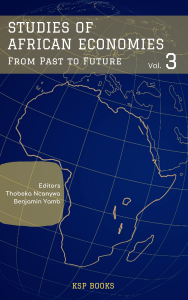
By Thobeka Ncanywa
Benjamin Yamb
Financial statements have become important sources of information about company performance in order to assess its financial stability and potential growth. However, additional information may be hidden on the interpretation in the values contained by financial statements. The study aims to assess financial performance with a case study of a company listed in the Johannesburg Stock Exchange utilizing financial statements and further investigate whether companies present their results precisely. The study intends to conduct an analysis on a company competitive positioning, valuation and financial stability. The results indicated that this case study’s financial statement could be beneficial for assessment of company performance. <More>

By Marlina Flassy
Papua Institute for Science and Technology/LIPTEK-Papua
Praise to God who has given me wisdom and knowledge and strength, so that I can finish this dissertation with time and of God’s plan. As the author, I realised that in writing this dissertation, of course, there are flaws in it, so I readily accept all criticisms and constructive suggestions from various parties to repair this thesis so that it better meets scientific writing. On this occasion, I would like to say that this dissertation could only be realised through the moral and material support from various parties. <More>
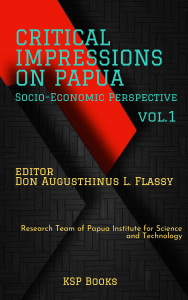
By Don Augusthinus Lamaech Flassy
Papua Institute for Science and Technology/LIPTEK-Papua
How to understand human activities and behavior, or, more generally, the ethical nature of human existence itself, is a question that has long been a subject of debate among sociologists and economists alike. It is equally an important source of predictive and predictable behavior.. <More>
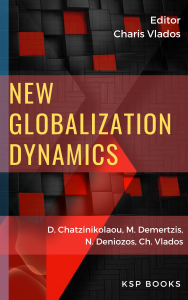
By Charis Vlados (Editor)
Democritus University of Thrace, Greece
We are experiencing a phase of profound restructuring of globalization nowadays, manifested through a wide variety of crisis symptoms, articulated at the same time upon the economic, political, social, and environmental spheres. Everything shows that the movements of the world’s “tectonic plates” are re-shaping the existing geo-economic and geopolitical balances on the planet drastically, causing new challenges to emerge, as well as new opportunities and threats for all stakeholders and participants in the global socioeconomic system. <More>
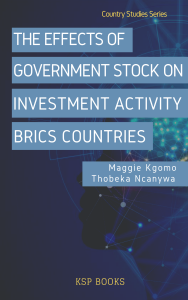
By Maggie Kgomo & Thobeka Ncanywa
University of Limpopo, South Africa
Brazil, Russia, India, China and South Africa (BRICS) are distinguished as having the fast growing markets in the universe compared to other markets of emerging economies, according to their promising economic prospective and demographic power. This study investigated the effects of government stock on investment activity in BRICS countries. This study used panel autoregressive distributed lag model (PARDL), Engel-Granger causality test, impulse response functions (IRF) and variance decomposition tests. Such techniques were applied to the annual data for the periods 2001 to 2016 in order to determine the effects of government stock on investment activity. The PARDL showed that in the long-run investment activity was positively influenced by government stock on mutual banks and government stock on liquid assets, and negatively related to government stock on bonds and government stock on corporations. <More>

By Benjamin Yamb & Oscar Bayemi
University of Douala, Cameroon
This book analyzes and highlights the most practised forms of corruption in public hospitals of Douala metropolis in Cameroon, namely corruption with theft and that without theft. The results of our analyzes show a predominance of the form without theft, this regardless of the hospital, and this allowed us to classify hospitals based on the dominant form. It appears that the General and Deido Hospitals are health facilities where corruption without theft is the least and the most practiced respectively, while the Cité des Palmiers and New Bell hospitals are those where corruption with theft is the least and the most practiced. An estimate through odds ratios revealed for instance that the odds would be about 5.46 times higher that the form without theft is not practiced at the General hospital compared to other hospitals, and about 11.11 times that it is practiced at Deido hospital compared to all hospitalsh. <More>

By Don Augusthinus Lamaech Flassy
Papua Institute for Science and Technology/LIPTEK-Papua
With the presence of this book entitled “ITU DIA – This is it, PAPUA” Restoring the Self, then, I, as the author should raise praise and gratitude to the God of Mercy and Graceful, who has bestowed wisdom and reason so that it can be realized and can reach the hands of dear readers. For that, please allow for this joy the author would like to share by expressing gratitude to various parties who have contributed to the author, so that this book can be realized. <More>
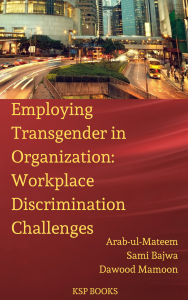
By Arab-ul-Mateen
University of Management and Technology, Pakistan
Sami Bajwa
University of Management and Technology, Pakistan
Dawood Mamoon
World Economic Survey Expert Group, Pakistan
The study explores the challenges an organization face when transgender persons are employed. One of the challenges is workplace discrimination issue against the transgender employees. Further, the role of transformational leadership has been examined in dealing with workplace discrimination issues. The study is based on qualitative analysis where in the validity and credibility of the study is ensured using data triangulation i.e. data is collected through unstructured interviews, participant observation and documents & pictures. Also, source triangulation i.e. different categories of respondents included 6 transgender employees, 6 other employees who works closely with transgender employees, 3 HR personnel, and the Executive Director Akhuwat. <More>

By Hiroaki Hayakawa
How to understand human activities and behavior, or, more generally, the ethical nature of human existence itself, is a question that has long been a subject of debate among sociologists and economists alike. It is the question that has divided the two camps while guiding us toward a deeper understanding of our activities as agents of multiple orientations. This book presents my work on two themes about the ethical nature of human existence as spontaneous activities in relation to the environing world that this existence reveals to itself. Our first theme deals with human existence as socio-cultural agents who seek symbolic profits under a system of cultural symbolism and value patterns/norms, and the other deals with human existence as economic agents who seek economic profits under a system of relations that define the market equilibrium. There is a close affinity between these two facets. Our activities as socio-cultural agents are anchored in a system of cultural symbolism and value patterns that are internalized in our institutionalized dispositions. As such agents, we seek symbolic profits by expressing our choices systematically in reference to this system. The rationality of such expressive behavior should, therefore, be as dictating and sensible as the rationality of seeking economic profits. The point we make is that expressive behavior would not be possible in a vacuum, that is, without some externally given sources of value patterns and symbolism with which to express our choices. This entails that socio-cultural choice behavior is intertwined with these sources that we discover in an environing world through our own existence as socio-cultural agents. Specifically, the behavior expresses itself as a consistent norm-guided behavior that helps reproduce the same norms and value patterns and maintain the symbolic nature of our activities. Furthermore, such norm-guided behavior is not independent of the conditions of the bounded rationality in the sense that it helps reduce the cost of decision making and problem-solving, thereby serving as powerful heuristics that simplify otherwise complex problem-solving and lead to the attainment of symbolic profits at the same time. It is equally an important source of predictive and predictable behavior.. <More>
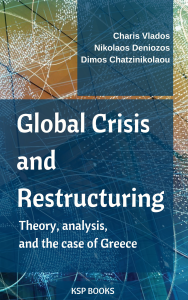
By Charis Vlados, Nikolaos Deniozos & Dimos Chatzinikolaou
This book examines the global restructuring since its appearance from the late 2000s to the present. It tries to describe and explore the fundamental dimensions of the phenomenon of the current crisis and repositioning of the global socioeconomic system by following an analytical perspective that exceeds a “conjunctural” perspective. It counter-proposes a view of examining the contemporary historical configurations of globalization dynamics in structural and evolutionary terms. Finally, it considers that a valid perception of the current global restructuring requires the simultaneous co-examination of adaptation, innovation, and change management of the partial socioeconomic organizations, sectors of economic activity, and overall socioeconomic systems, at all the “organically linked” levels of space: local, national, international, and global. <More>
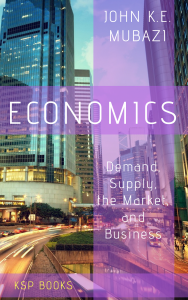
By John K.E. Mubazi
This book concentrates on the elementary micro-economics, both theory and applied. The purpose is to produce a relatively portable text covering micro-economics at an elementary level in sufficient details. This supplements related materials in more complete texts but that fail on details. This portability and supplementation properties rationalises the need of the text. After the introductory remarks in chapter one, the text takes an elementary approach to the theoretical basis of supply and demand in the second chapter and production in the third chapter. The treatment of imperfect competition in chapter four is typically slightly more complicated but nonetheless still elementary. The last chapter is an application of the earlier chapters both in a micro and macro sense or setting. The last chapter is rather unique, not commonly found in texts of this nature which from chapter four would go into macro-economics, often starting with national income. In this way, the text does provide an opportunity of applying the micro foundations to the business world albeit in an elementary setting. The primary audience of this book is the student community in the early stages of the discipline. Practitioners and policy makers would find it useful as a backdrop. <More>
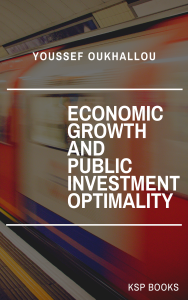
By Youssef Oukhallou
This book investigates the relation between economic growth and public investment expenditures. It examines the level and means to improve the macroeconomic effectiveness of government investment spending and explores the concept of optimality under the constraint of debt sustainability. Additionally, this research analyzes the legislative and institutional factors that could slow down the effectiveness of investment expenditures, and provides hints on how the reduction of corruption could help fiscal policy converge toward optimality. The first chapter sheds light on economic growth in the literature as a core variable of the economic activity, its determinants and the role of investment, particularly public investment, as a potential contributor. The second chapter focuses on public investment’s macroeconomic effectiveness, as the first leg of optimality. The emphasis is laid on the examination of the macro-financial framework of Morocco as an example of developing countries, followed by a larger benchmark panel data model. Afterwards, I estimate public investment expenditures’ impact on GDP, along with other variables such as GFCF and public consumption. The third chapter introduces debt sustainability as the second component of public investment optimality. The twofold concept of optimality is then encompassed in an experimental small scale macroeconomic model for public investment policy analysis, on which a series of policy shocks is driven in order to further discuss different hypotheses. Throughout this book, I reveal that the macroeconomic impact of public investment expenditures is below the effectiveness levelhence could not logically be optimal even if public debt is found to be sustainable. Subsequently, a number of effectiveness-oriented institutional recommendations are prescribed. The policy simulation also suggests that an increase in public investment spending that is not totally or predominantly matched with a rise in public revenues has a larger and longer negative impact on public debt than a positive one on GDP growth. On overall, public investment’s optimality in the realistic framework of a developing economy seems to be strictly conditioned by a cumulative series of positive variations combined with the improvement of profitability-based selectivity of investment projects, under the constraint of a debt ratio that should not exceed 60 percent. <More>

By Charis Vlados
This volume presents some fundamental elements to the Stra.Tech.Man approach, which the author of this book tried to develop during the last few years. The main challenge of the Stra.Tech.Man approach is to synthesize interpretatively the analytical spheres of strategy, technology, and management, upon the effort of any socioeconomic organization to innovate, survive, and develop. The following chapters search to define and apply in particular the multiple applications of the Stra.Tech.Man concept. They use this approach as an analytical mechanism to perceive in the context of the current transformative phase of globalization the aspects of competitiveness, innovation, and change management. <More>
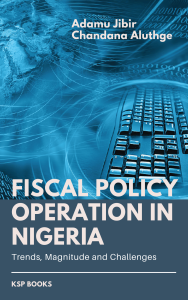
By Adamu Jibir & Chandana Aluthge
This book is designed to highlight Nigeria’s fiscal policy operation since the oil boom of 1970s putting into cognizance various policies and programs initiated and implemented during the period. Specifically, the trending behaviour of fiscal policy variables – including government expenditure, public debt and public revenue are analysed. Public financial management and fiscal policy reforms are also discussed. Challenges of fiscal policy in Nigeria are also explained in this book. The book shows that since the 1970s, the Nigeria’s fiscal policy can be said to have lacked definite and clear objective as majority of times the objectives are too broad reflecting majorly macroeconomic goals. Fiscal policy of Nigeria is also characterized by rising government expenditure without corresponding increase in public revenue which had deteriorated the fiscal stability of the country resulting to higher inflation and fiscal deficit accompanied by large accumulation of debt. The ability of the country to implement counter-cyclical fiscal policy to address the fiscal imbalances is mostly constrained by fluctuation in oil price, administrative inefficiencies and irregularities in the budgetary process. Sadly, despite reforms and initiatives undertaken, it is observed that they are weakened by persistent political influences and unnecessary delays in formulation and implementation of policies which in turn affect their performances. Government fiscal policy needs to be re-considered by moving from broad fiscal policy to a specific fiscal policy that will consider the needs and demand of people and derive the fiscal policies from such considerations. This can be done by strengthening the existing bodies and institutions saddled with the responsibility of making fiscal policy so as to make them efficient and effective and accommodative to people’s needs through pro-poor policies and programmes. <More>

Edited By Benjamin Yamb & Youssef Oukhallou
(Ch.1) This Chapter makes a literary analysis on the factors that impact economic development in Africa, under the approach of the foundations of institutional school of Thorstein Veblen… (Ch.2) The objective of this chapter is to examine the impact of human capital, both quantitative and qualitative, on growth and convergence rates for a sample of African countries over the period 1970-2014… (Ch.3) This Chapter analyzes the main channels of transmission of corruption on public spending on health and education as well as their impact on the well-being of populations…. <More>

By Mario Coccia
n 2009, Brian Arthur claimed that one of the most important problems to understand regarding technology is to explain how it evolves. In fact, the evolution of technology plays an important role in the economic and social change of human societies. Technological evolution as a main process of technical change has been compared to biological evolution by many scholars. The similarities between biological and technological evolution have generated a considerable literature. Wagner & Rosen (2014) argued that biological thinking has reduced the distance between life sciences and social sciences. Basalla (1988) suggested that the history of technology can profitably be seen as analogous to biological evolution. Technological evolution, alongside biological evolution, displays radiations, stasis, extinctions, and novelty. In general, patterns of technological innovation emerge and evolve with technological paradigms and trajectories in specific economic, institutional and social environments. Hosler argues that the development of technology is, at least to some extent, influenced by “technical choices”, which express social and political factors, and “technical requirements”, imposed by material properties. Arthur & Polak claim that: “Technology … evolves by constructing new devices and methods from ones that previously exist, and in turn offering these as possible components—building blocks—for the construction of further new devices and elements”. In particular, Arthur (2009) argues that the evolution of technology is due to combinatorial evolution: “Technologies somehow must come into being as fresh combinations of what already exists.” This combination of components and assemblies is organized into systems or modules to some human purpose and has a hierarchical and recursive structure. Other scholars suggest that technological evolution is driven by solving consequential problems during the engineering process and by supporting leadership of distinct purposeful organizations —for instance firms— to achieve the prospect of a (temporary) profit monopoly and/or competitive advantage. <More>
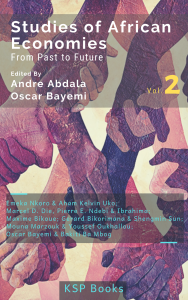
Edited By Andre Abdala & Oscar Bayemi
(Ch.1) The Chapter investigated the transmission channels of monetary policy shocks on real per capita output in Nigeria for the period 1981 to 2017 using Vector Auto-regressive framework… (Ch.2) This Chapter identifies factors likely to explain business failure in the Cameroonian textile industry… (Ch.3) The object of the Chapter is to highlight the incidence of the funds send by African migrants on the growth and development of their home countries… <More>
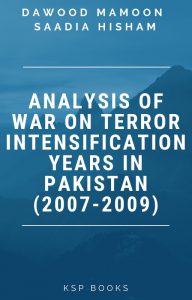
By Dawood Mamoon
The years 2007-2009 have been one of the more volatile years in Pakistan’s recent political history. The regime of President Musharraf in 2007 was faced with many domestic challenges that included a wave of terrorism across Pakistan as an after math of Lal Mosque incident where state of Pakistan dealt with voices of dissent with force. Lal Mosque incident became the pre cursor for President Musharraf’s ouster in 2008 as his government became weaker when a nationwide movement of dissent over took the street popularly known as Lawyers movement. In 2008, Pakistan returned to a democratic state when Pakistan People’s Party was elected. However, the events of 2007 still haunted Pakistani economy and the echo of terrorism lasted for some time. Whereas the clamp down on extremist elements were also intensified as a state response. Pakistan was at War with extremism and the War on Terror that started in Afghanistan in 2002 had found its way into Pakistan. Pakistan army was instrumental in waging the fight against extremism that witnessed unprecedented violence in the country during (2007-2009). Nevertheless, these years’ mark events that suggest that there was a network of Al Qaida within the borders of Pakistan capable of working independently in the country. These War on Terror intensification years reversed most of the economic gains and economic achievements of Musharraf regime. Pakistan became a security state even after its return to democracy in 2008. The travel advisories for Pakistan recommended foreigners to avoid visiting the country. Pakistan was further isolated internationally. External sector suffered significantly when exports witnessed a deep plunge. The economic growth rates halted to less than 1 percent of GDP from as high as 7 percent. This books in detail covers the events of terrorism in Pakistan in 2007 to 2009 period to give readers a comprehensive picture of how bad the situation had become in War on Terror intensification years. Then a detailed discussion is also carried out on Pakistan’s economy so that readers have detailed view of the economic costs that was born by Pakistani nation for their participation in War on Terror. These costs or not limited to loss of property but it also include loss of many precious lives including the life of former Prime Minister of Pakistan Benazir Bhutto. <More>
2018 Collection
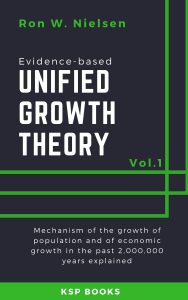
By Ron W. Nielsen
Unified Growth Theory published by Oded Galor is called unified because it puts together earlier attempts to explain the historical economic growth and the historical growth of population. These attempts were made over many years and by now they form the established knowledge in economics and in demography. Unfortunately, the past research was difficult because (1) access to data was strongly limited and (2) growth turns out to be represented by strongly deceptive distributions. They create an illusion of stagnation followed by a sudden explosion, while in fact they increase monotonically all the time and there is no sudden transition from a slow to fast growth. Data represented by these distributions have to be carefully and methodically analysed; otherwise conclusions are based on illusions. <More>

By Ralph S. Musgrave
FR is sometimes called “100% reserve banking”, while German speakers use the word “Vollgeld”.The following few paragraphs are a brief summary of FR. Commercial banks create money when they make loans, as explained by an article published by the Bank of England – McLeay (2014) And that freedom to create money is a subsidy of banks, for reasons given by for example Huber (2000, p.31, 2nd paragraph). As Huber says, if commercial banks can simply print the money they lend out, rather than obtain such money in the same way every non bank firm obtains money, i.e. earn it or borrow it, then commercial banks can lend at an artificially low rate of interest. Or to put it more strongly, as explained by the Nobel laureate economist, Maurice Allais, private money creation amounts to counterfeiting. <More>

By Sule Akkoyunlu
The adoption of agricultural innovations is crucial for economic growth as well as economic development. However, in order to help leverage the adoption and diffusion of innovative practices, it is important to understand the process of agricultural innovation and its determinants. Using data derived from interviews, published materials, and observations, this study identifies the key factors that determine agricultural innovations in Turkey. Based on these insights, the paper identifies the characteristics of innovative farmers and suggests policy strategies to encourage agricultural innovations. The analysis shows that agricultural innovations are taking place in Turkey and various public and private stakeholders contribute to the development and adoption of innovation in agriculture. <More>

By Dawood Mamoon & Sohail Paracha
Over the past decade Pakistan remained involved in two major trade agreements with in the South Asia (Pakistan & Sri-Lanka FTA and SAFTA). It is meaningful from an operational and policy perspective to evaluate Pakistan’s trade performance in South Asia against its objectives of greater trade integration and suggest policy interventions to improve its effectiveness. In order to achieve this objective, current study evaluates the Pakistan’s overall and chapter-wise trade performance with SAARC major SAARC economies for the last seven years (2003-09). This study has been disaggregated into two parts: In the first part of the study, an assessment of trade performance of SAARC members is carried out with respect to the rest of the world. Pakistan’s trade performance vis-à-vis other SAARC members is the focus of this part. In the second part Pakistan’s trade performance in South Asia has been analyzed and policy interventions have been suggested to improve its effectiveness. <More>

By Ron W. Nielsen
Unified Growth Theory published by Oded Galor is called unified because it puts together earlier attempts to explain the historical economic growth and the historical growth of population. These attempts were made over many years and by now they form the established knowledge in economics and in demography. Unfortunately, the past research was difficult because (1) access to data was strongly limited and (2) growth turns out to be represented by strongly deceptive distributions. They create an illusion of stagnation followed by a sudden explosion, while in fact they increase monotonically all the time and there is no sudden transition from a slow to fast growth. Data represented by these distributions have to be carefully and methodically analysed; otherwise conclusions are based on illusions. <More>

By Ralph S. Musgrave
Under the existing bank system, it is not just central banks and governments which create money: commercial banks do so as well. Many leading economists, including at least five Nobel laureate economists, have had doubts as to whether commercial banks should be allowed to do that. Indeed one of those Nobel laureates, Maurice Allais, described money creation by commercial banks as counterfeiting. “Full reserve” and “100% reserve” are names given to bank systems where commercial banks are not allowed to create or “print” money, or at least where that money creation is curtailed. Other names include “Sovereign Money” and “Vollgeld”. <More>

By Mario Coccia
One of the most significant topics in economics and social sciences is to explain the active role that science and technological innovation play in the economic and social change of nations. Firstly, the term innovation and science advances are used so widely to indicate something new and different. However, this definition doesn’t tell us how we would recognize an innovation and science advances, how we could categorize them, how to explain their origin and evolution, as well as how to measure them in markets and society. The goal of this book is to explain some characteristics of technological innovation and science in society. In particular, this book focuses on new researches that can clarify the origins of studies concerning science and innovation, the categorization of innovation, the sources and aspects of the evolution of innovation and some techniques to measure technological advances and predict which technologies are likely to evolve rapidly in society. <More>
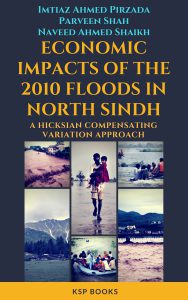
By Imtiaz Ahmed Pirzada, Parveen Shah & Naveed Ahmed Shaikh
This Present study has applied Hicksian Compensating Variation approach for empirical estimation of the welfare loss in the households of the four selected districts of North Sindh (Qamber Shahdadkot, Kashmore-Kandhkot, Jacobabad and Shikarpur) that were severely affected during flood 2010. The income and substitution effects were estimated from Marshallian demand curves. Slutsky equation is applied to isolate the income effect from the total effect to estimate the Hicksian demand equations. The total intervention estimated to be required was approximately PKR 61.16 billion in the four selected districts however the total intervention provided in the form of rescue, relief, rehabilitation, and reconstruction was equal to PKR 47.2 billion. <More>

By Ron W. Nielsen
Unified Growth Theory published by Oded Galor is called unified because it puts together earlier attempts to explain the historical economic growth and the historical growth of population. These attempts were made over many years and by now they form the established knowledge in economics and in demography. Unfortunately, the past research was difficult because (1) access to data was strongly limited and (2) growth turns out to be represented by strongly deceptive distributions. They create an illusion of stagnation followed by a sudden explosion, while in fact they increase monotonically all the time and there is no sudden transition from a slow to fast growth. Data represented by these distributions have to be carefully and methodically analysed; otherwise conclusions are based on illusions. <More>

By Ralph S. Musgrave
This book consists of a series of working papers written by the author and published by the Munich Personal RePEc Archive between 2006 and 2011 inclusive. The extent to which the ideas in each paper have subsequently been revised or updated by the author in later publications varies from paper to paper. This is a rough guide to how much revision there has been. <More>

By Vaqar Zafar Ahmed & Dawood Mamoon
Over the past decade Pakistan remained involved in two major trade agreements with in the South Asia (Pakistan & Sri-Lanka FTA and SAFTA). It is meaningful from an operational and policy perspective to evaluate Pakistan’s trade performance in South Asia against its objectives of greater trade integration and suggest policy interventions to improve its effectiveness. In order to achieve this objective, current study evaluates the Pakistan’s overall and chapter-wise trade performance with SAARC major SAARC economies for the last seven years (2003-09). This study has been disaggregated into two parts: In the first part of the study, an assessment of trade performance of SAARC members is carried out with respect to the rest of the world. <More>

By Hrabrin Bachev, Shengquan Che & Svetla Yancheva (Eds.)
Around the globe, revitalization of agrarian and rural sector is one of the most topical issues for farmers, agrarian and rural communities, interest groups, researchers, investors, policymakers, and the public at large. In China and Bulgaria there are numerous publications on individual issues of agrarian and rural revitalization and sustainable development. Despite enormous progress in the theory and practice in that important new area, there are few comprehensive studies on the entire spectrum of agrarian and rural revitalization issuesin these two countries, and on their interactions with public policies, private and collective strategies and forms, market and technological development, social and communities’ dynamics, etc. <More>
By Ana Paula Martins
This book inspects the interdependencies among social disruption signals and their relationship to economic conditions as emerging from available Portuguese time series. Comparisons with international cross-section evidence are provided. Three types of innovations are presented: firstly, it searches for interactions – and common causes – between indicators of general aggressiveness or pro-activity that include accident, suicide, divorce rates and armed forces along with criminality records. Secondly, it illustrates theoretical applications of principal components: in time series filtering; in cross-correlation and corresponding significance-level probabilities analysis; in the treatment of missing cases. Finally, estimators based on observational replicability of second moments are proposed.
By Bachar Fakhry
The efficient market hypothesis has been around since 1962, the theory based on a simple rule that states the price of any asset must fully reflect all available information. Yet there is empirical evidence suggesting that markets are too volatile to be efficient. In essence, this evidence seems to suggest that the reaction of the market participants to the information or events that is the crucial factor, rather than the actual information. This highlights the need to include the behavioural finance theory in the pricing of assets. Essentially, the research aims to analyse the efficiency of six key sovereign debt markets during a period of changing volatility including the recent global financial and sovereign debt crises. We analyse the markets in the pre-crisis period and during the financial and sovereign debt crises to determine the impact of the crises on the efficiency of these financial markets. We use two GARCH-based variance bound tests to test the null hypothesis of the market being too volatile to be efficient. Proposing a GJR-GARCH variant of the variance bound test to account for variation in the asymmetrical effect. This leads to an analysis of the changing behaviour of price volatility to identify what makes the market efficient or inefficient. In general, our EMH tests resulted in mixed results, hinting at the acceptance of the null hypothesis of the market being too volatile to be efficient. However, interestingly a number of 2017 observations under both models seem to be hinting at the rejection of the null hypothesis. Furthermore, our proposed GJR-GARCH variant of the variance bound test seems to be more likely to accept the EMH than the GARCH variant of the test.
By Falih M. Alsaaty & Hany H. Makhlouf
The main theme of this book is that entrepreneurship has become a global phenomenon, having spread widely throughout the world, and is considered a major force behind economic prosperity, job growth, and wealth creation. Its close relationship with the introduction of innovative products, new business models, and production technologies has added to its mystique and broad appeal. In addition to the growing interest in business-oriented entrepreneurship, there has been a revival, in recent years, of interest in social entrepreneurship which aims at introducing radical innovative solutions to social and environmental problems that the free market and governments have failed to address or solve. This book discusses the state of entrepreneurship from both the domestic and global perspectives. It also explores how entrepreneurial enterprises can establish and sustain a culture of innovation that would increase their competitive advantage and prospects for long-term survival and growth. The thesis in this presentation is that entrepreneurship and innovation are inseparable; and that small/ entrepreneurial firms often have an advantage over many large firms in innovating and introducing desirable changes. Three chapters are devoted to introducing potential entrepreneurs to different kinds of entrepreneurship, mainly social entrepreneurship, e-entrepreneurship, and international entrepreneurship. This exposure makes it possible for them to choose from these alternatives in planning their new ventures. What these different types of entrepreneurship have in common is that they provide individuals – who have entrepreneurial spirit, zeal and skills- with an opportunity to introduce their innovative ideas, models, and technologies that would make a difference in the marketplace or in society at large. An added contribution of this book is the appendices that present a step-by-step guide to planning new ventures, factors that are considered in seeking and getting bank loans as a part of the start-up capital, and export procedures and guidelines. These appendices are presented in a simple and clear manner in order to ease the concerns of those who have no prior experience in starting a business or in getting into the global market as exporters of goods and services.
By Oded Kafri
In this collection of papers, it shown that the “order”which is generated around us by evolution and the results of our doing can be explained by the propensity of entropy to increase; namely, by the second law of thermodynamics. Entropy is conceived by many as a disorder, however, that is true only for spares systems. In a dense system, entropy is information thatis characterized by a long tail distribution. In order to apply the second law to sociology and economy, we have to define a sociological net. With analogy to the internet, in which, in principle, every site can receive and broadcast information to any other site we can describe economic network as a group of bank accounts that each one of them canreceive or pay money to any other account. The distribution of links between the sites is similar to that of money in the bank accounts. This long tail distribution,whichis obtained by maximizing the entropy of the net, is called Planck-Benford distribution. It is also shown that Planck-Benford distribution can predict polls distribution; Gini inequality Index in the OECD countries;the percentage of the relative poverty; the salaries of the CEO’s relative to the average salaries and the number of employees. Moreover, the Planck-Benford income distribution, being an equilibrium distribution (Max Entropy), can provide a standard tool for estimatingthe stability of the economy of a given country namely closer the income distribution of a country to Planck Benford distribution closer the economy to equilibrium.
By Sirma Sonmezer
The main purpose of this study is to understand the impact of age on work values, organizational commitment and work centrality. In this respect, it is hypothezied that there are differences in work values, organizational commitment, and work centrality among age groups. In addition, therelationship of organizational commitment with work values, and work centrality in different age groups is explored. The study was conducted in Istanbul, Turkey with the participation of 935 university graduate, corporate white-collar employees of large companies in Istanbul. In-depth interviews were conducted for the qualitative stage and a web-based survey was administered for the quantitative stage of data collection. An important contribution of this study is the emic items identified for the Turkish work context. These emic itemsare suggested to be incorporatedtowork values inventory for future research. The results indicateddifferences in work values, and organizational commitment levels among different age groups as well as changes among age groups in the level of importance of work. It was confirmed that there is a relationship between work values and organizational commitment, and between work centrality and organizational commitment. The results of the study also showed that work values differ according to gender.
By Rabia Bashir, Sami Bajwa, & Dawood Mamoon
This study is carried out to analyze the factors that results in conversion of borrowers into donors. The findings assist the microfinance institutions in coming up with the most appropriate measures to apply in order to eliminate not only defaults but also gain some financial sustainability by improving its donor profile. The study establishes that religious education and organizational religious philosophy influence borrower’s prosocial behaviors. Through religious teaching Akhuwat inculcate sense of responsibility, feeling of gratitude and psychological attachment, along with spiritual satisfaction to motivate borrowers to become donors. Being faith inspired organization; Akhuwat culture and its brand image depict strong association with Islamic value. The study recommends that the MFIs in order to enjoy a cordial relationship need to align their business philosophy with the local culture.
By Hrabrin Bachev
On March 11, 2011 the strongest ever recorded in Japan earthquake occurred which triggered a powerful tsunami and caused a nuclear accident in one of the world’s largest nuclear plant stations. The triple disaster has been having immense impacts on people’s life, health and property, social infrastructure, economy, policies, natural and institutional environment, etc. in the affected regions, Japan, and beyond. This book tries to make a comprehensive assessment on the multiple impacts of the March 2011 Great East Japan Earthquake, tsunami and Fukushima nuclear accident on the Japanese agriculture and food sector. It identifies and evaluates radiation, displacement, health, physiological, production, economic, technological, organizational, environmental, institutional, political, etc. impacts of the disasters in all stages (inputs supply, farming, storage, wholesaling, transportation, processing, distribution, retailing, consumption) and components (natural resources, labor, biological and material assets, intangibles, technology, production structure, finance, waste disposal, information, management) of agri-food chain, and temporal (immediate, short-term, long-term) and spacial (local, regional, national, trans-national) scales. It summarizes responses of individuals, households, farms, businesses, communities, consumers, stakeholders, and authorities as well as assesses the progress and challenges in the post-disaster recovery and reconstruction. The book withdraws lessons from the Japanese experiences and suggests recommendations for effective risk management in Japan and around the globe. The study is based on a wide range of information from governmental, academic, farmers, industry, international, etc. organizations, media, experts assessments and in-deep interviews with leading experts, stakeholders, and affected agents. Findings are presented in a popular way in order to reach a larger audience of researchers, educators, students, experts, farmers, businessmen, administrators, policy makers, professionals, non-governmental and international organizations, consumers, victims, and public at large.
By Ana Paula Martins
This research explores the real effects of the monetization of a stylized one-sector capital growth model driven by rational representative agents. On the one hand, it introduces the appropriate adjustment to the state variable dynamic accounting equation to reflect a (paper) cash-in-advance or trade money finance constraint in the presence of exogenous real reserve requirements. Such constraint embeds real convertibility – even if not for idle real reserves-, conformable with the role of money as both general means of payment, unit of account and store of value, and with the purchase of money at the inverse of the (real product) general price level. Commodity money then arises as the special case of a 100% (real…) required reserve ratio. On the other, it suggests generalizations of the state equation that (also) encompass product immobilization – production-before-expenditure – constraints, as well as delays, or even real losses, along the money creation process, that, as the CIA assumption, reflect on inventory stock rotation. Additionally, one concludes that efficient outcomes require the use of (at least) two policy instruments. Two types of objective functions are considered: a standard accumulated discounted felicity function; and a point-wise utility function embedding bequest motives. Generalizations assuming taste for nominal growth at the utility level were staged for each case – taste for inflation may reflect psychological traits, compounding to and of similar nature to time discounting, implying distaste for increases in the (real) size of the nominal unit of account, working similarly to money illusion – possibly, to nominal discounting of utility over nominal arguments. Also, productivity enhancement due to nominal growth – working, say, through ease of inventory drainage – was simulated. Technically (mathematically), the hypotheses are convenient to generate non-negative growth of optimal per capita nominal money balances – and, therefore, prices – along the (and…) steady states. In real economies, price stability insures the constancy of money as measurement unit; such devices allowed to at least achieve a stable (non-negative) balanced inflation growth rate – but are consistent with residual barter trade of unsold merchandise. Nominal MIU was therefore also tested, as felicity functions combining real as nominal consumption as arguments. The analysis relies on a discrete methodology. A storable good economy is briefly confronted with some of the structures. Contrast (and merger) with a high-powered money supply multiplier mechanism is also briefly outlined. Time interval between transactions, the money rotation period, is endogenised.
By Tai-Yuen Hon
We compile ten of KSP Journals articles published during 2015 to 2016 in this volume. This volume includes the part I monetarism: we review both the theoretical as well as empirical literature relevant to monetarism and examine the empirical study on causality relationship between money, income, price and exchange rates (3 articles); the part II behavioral finance we analyze the behavior of Hong Kong small investors in stock markets and derivatives markets (4 articles); we discuss foreign-invested enterprises and sourcing in China, online securities trading service in Hong Kong (3 articles in commentaries) investors in the Hong Kong stock market.
By Hrabran Bachev & Fusao Ito
On March 11, 2011 the strongest ever recorded in Japan earthquake occurred, also known as the Great East Japan Earthquake, which triggered a powerful tsunami and caused a nuclear accident in one of the world biggest nuclear power stations – Fukushima Daichi. More than six years after the triple disaster the overall impacts on Japanese agri-food chains is far from being completelydue to the scale of the disasters and the number of affected agents, the effects’ multiplicities, spillovers, and long time horizon, the constant evolution of the nuclear crisis, the lack of “full” information and models of analysis, etc. This paper presents updates on the impacts of the March 2011 earthquake, tsunami and Fukushima nuclear accident in Japan on country’s agriculture and food sector. First, disaster events and their effects is outlined. Second, impact on farms and agricultural resources is estimated. Third, impact on food industries is assessed. Next, extend of radioactive contamination of agri-food products is presented and effects on markets, consumers and international trade evaluated. Chapter summarises responses of different agents, assesses progress and challenges in post-disaster recovery and reconstruction, and withdrawlessons from the Japanese experiences.
By Sergey Ivanov
This research explores the requisite relationship between managers and their subordinates in managerial hierarchies as stipulated by a general theory of managerial hierarchy (GTMH) developed by Dr. Elliott Jaques. Dr. Jaques writes, “When managers and immediate subordinates are in roles in adjacent layers, things can work well; if within same layer, the manager is “breathing down the necks” of the subordinates; if more than one layer apart, the manager is “pulled down in the weeds”. Jaques’ empirical finding of the Manager-Subordinate Relationship (MSR) describes how a subordinate, in a managerial hierarchy, feels towards the manager, and how the manager feels towards the subordinate. Optimum MSR is achieved when the subordinate feels just right towards the manager. In Optimum MSR, the manager also feels just right towards the subordinate and that the subordinate does not “pull the manager into the weeds.” In the non-Optimal Manager-Subordinate Relationship (non-effective management according to Dr. Jaques’ theory), the subordinate reports either that the manager is too close (breathing down the necks), or too far (pulled down into the weeds). The manager in non-Optimum MSR also reports either of the two conditions: that the subordinate is either too close or too far. The relationship between the working stratum of managers and subordinates and Jaques’ manager-subordinate relationship-types has not been tested. This study is the first attempt to test these specific theoretical propositions developed by Jaques, and possibly advance general theory of managerial hierarchy. The study’s primary research question is whether there is a relationship between the working roles of the managers and subordinates, and Jaques’ MSR. The study’s exploratory secondary research question attempts to discover the effects of the current potential capability of manager and subordinate on the MSR as defined by Jaques and Cason. The effects of current potential capability on the MSR are not described by general theory of managerial hierarchy, though Dr. Jaques discussed privately with the author the possibility that capabilities may play a significant part (in addition to the working stratum), impacting the manager-subordinate relationship. The exploratory proposition of the secondary question is whether MSR correlates strongly when the manager’s role is one stratum higher than the subordinate’s role and the manager’s current potential capability (CPC) corresponds with the manager’s role stratum, and the subordinate’s current potential capability corresponds with the subordinate’s role stratum. The author believes it is possible to test the primary research question, and thus, test this aspect of the theory (this proposition has not been tested). Furthermore, the secondary question could potentially advance the theory relating capabilities of managers and subordinates to their working strata.
By Sitki Sonmezer
Relatively higher return expectations, tax exempt environment, low correlation with the returns in developed markets, and the ongoing European accession process have attracted non-domestic funds to the ISE recently. In this period, it is seen that foreign inflows have broadened the investor base and have affected security prices. The price impact of a 1 % increase in the share of foreign funds according to the market capitalization, results in an increase of 2.77 % – 3.57 % in the returns of the ISE 30. Foreign inflows have significant influence on the ISE even after controlling for the omitted variables used in this thesis. It has also been determined that non-domestic funds chase returns and engage in positive feedback trading when they invest in the ISE. The scope of this book is the effects of foreign order flow and resulting change in the liquidity levels, on stock returns. Even though there are numerous studies about the effects of order flow on stock prices and the relationship between liquidity and stock prices have also been studied widely in the literature, the impact of foreign participation on a market is relatively undermined in the literature. One of the reasons may be the fact that the differentiation of order flows as domestic flows and foreign flows became popular in the last two decades when foreign investors increased their significance and dominance in these markets. Developing Information Technology and pervasiveness of internet enabled funds to flow in and out of countries and consequently, researchers aimed to assess whether foreign funds are detrimental or not to the markets they study. Moreover, the existing studies that examine the effects of order flows mostly cover the developed markets where foreign funds are usually a minority but ISE is heavily dominated by foreign funds, the participation rate of foreigners equal to % 66.55 as of 20-11 2009 and this market may give out promising outcomes as it is an emerging market that doesn’t have much prominence in the related literature.
By Dawood Mamoon & Silvia Hernandez
In this book we analyze the institutional arrangement between various actors to understand how ICT project objectives flow among actors in a standard LINCOS project and how they would affect the sustainability and effectiveness of LINCOS in particular and an ICT project in general. Since there are many actors involved in different stages and processes of a single LINCOS project, the paper analyses the bilateral and multilateral relationships among these actors to understand the factors that might affect the efficiency of the ICT project. In other words the paper looks at the actors involved in a LINCOS project in an effort to capture those circumstances under which a LINCOS project is exposed to principal- agent problems.
By Edouard Novatorov
The objectives of the study were (a) to identify the reasons and concerns of those public administrators and marketing scholars who do not accept the usefulness of marketing in the public sector; (b) to deconstruct, comprehend, interpret, and critically appraise the current conceptualization of public sector marketing from the viewpoint of negativists identified in step (a); and (c) to reconstruct, redefine, reinterpret, and reoperationalize the current controversial conceptualization of public sector marketing into a new conceptualization in the context of park and recreation services. The critical theory approach to the study primary used non-empirical procedures data collection and analytic procedures which included investigative research, negative case analysis, and theoretical triangulation. These procedures were supplemented with empirical data collected from in-depth interviews with five scholars and with three parks and recreation managers. Results of the non-empirical procedures revealed the biased selective nature of the current conceptualization of public park and recreation marketing and the existence of alternative conceptualizations which have been ignored. The existing and alternative models were discussed with scholars and park and recreation managers. Support was found for the alternative models. From these data an alternative conceptualization of public park and recreation marketing was developed and named the concept of administered marketing. Implications for park and recreation managers are discussed. Directions for future research into the administratively managed park and recreation marketing concept are suggested.



